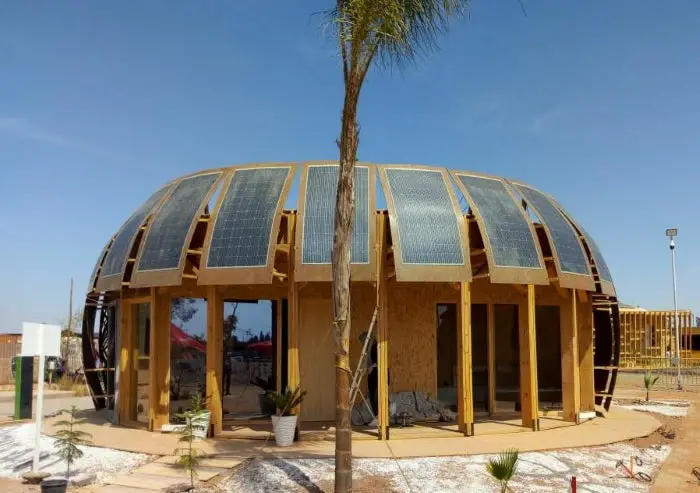A team of organizations in Morocco has finished the construction of an eco-building that employs hemp construction and a high-tech solar energy system for total independence from the electrical grid.
Developed under the SUNIMPLANT project, the building is designed as a single-family dwelling and was created as an entrant in the recent Solar Decathlon collegiate competition organized by the U.S Department of Energy and Morocco’s Centre de recherche en Energie solaire et Energies nouvelles.
The semi-annual international competition inspires teams to design and build highly efficient buildings powered by renewables while optimizing key considerations including affordability, resilience, and occupant health. The most recent edition of this competition was held in Ben Guerir, Morocco, and it was the first time the competition has ever been held on the African continent.
An overview of the building
Construction of the eco-building built for around US$120,000 covers 90 sq. m. and features a double skin façade that employs a mixture of hemp, earth, pozzolan and lime, all sourced locally; and bio-composites incorporating hemp technical fibers that were produced via vacuum injection technology.
Also Read: Phase I of Zenata ecological city project in Morocco to be completed in 2020
It also has a spherical, aero-dynamic outer skin comprising of 24 semi-flexible photovoltaic panels subsidized by DAS-Energy. The panels are exposed at all faces to utilize sun and light and have a maximum of 40% losses. Curved bio-composite panels made with hemp wool are also installed to increase the performance of the photovoltaic panels by protecting their backside against the weather extremes of the semi-arid region of Ben Guerir, where temperatures are considerably high.
Furthermore, the building also features high-performance glass from Saint Gobain, a French glassmaker.
International cooperation
Monika Brümmer said that greater performance could have been achieved if original plans to install hemp-clay boards for the internal partitions and floors, and other minor modifications had not been abandoned due to funding constraints
Brümmer is a German architect, owner at Spain-based Cannabric, and a co-founder of Adrar Nouh. The latter contributed to the architectural design, developed the hemp materials and co-operated in the construction of the building. Morocco’s National School of Architecture and National School of Applied Sciences, both based in Tetouan, Morocco, and Germany’s Fraunhofer Center for Silicon Photovoltaics also had a hand in the project.

